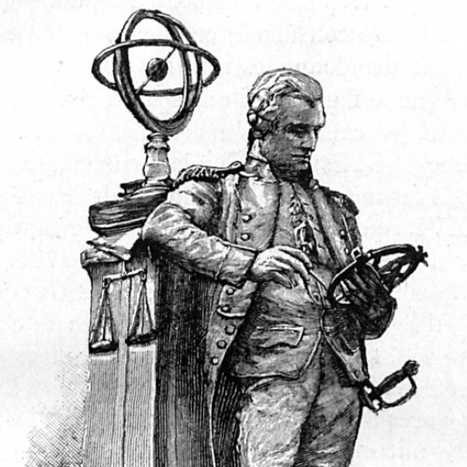He is one of those who determine the measure of the arc of the meridian: Who is Jean Charles de Borda?
Borda developed many tools used in astronomy and geodesy, especially the reflection circle and the signal repeater circle. He determined the length of the second pendulum in Paris and developed a method for measuring the period of oscillation of the pendulum.

(1733-1799) French mathematician, and physicist. He contributed to measurement techniques in the fields of hydrodynamics, astronomy, and geodesy with the tools and methods he developed. Jean Charles de Borda was born on May 4, 1733 in Dax. He studied at La Fleche College. After teaching mathematics for a while, he chose military service and entered the engineering class and then the light cavalry. In 1756, he was admitted to the Academy of Sciences with his work Memoiresur le Mouvement des Projectiles (“A Treatise on the Movement of Bullets”). Beginning in the 1760s, besides his military service, he conducted research on the resistance of fluids, hydraulic wheels, and astronomical instruments, and published various works on these subjects. In 1775, he was tasked with determining the exact location of the Canary Islands. For this purpose, he used new astronomy methods instead of the magnetic method used in locating in the past. He died in Paris on February 20, 1799.
Jean-Charles, chevalier de Borda (4 May 1733 – 19 February 1799) was a French mathematician, physicist, and Navy officer. Borda was a mariner and a scientist, spending time in the Caribbean testing out advances in chronometers.
Borda developed many tools used in astronomy and geodesy, especially the reflection circle and the signal repeater circle. In 1792 he determined the length of the second pendulum in Paris and developed a method for measuring the period of oscillation of the pendulum. In the field of hydrodynamics, he proposed a theory of the expansion of liquid or gaseous systems, which goes by his name.
Along with Borda, Delambre, and Mechain (1744-1804), he joined the commission to measure a meridian arc and made important contributions to the work of new weight and measurement systems. The basic unit of measurement, the meter, was one forty-millionth of the earth's meridian, according to the definition adopted in 1791. The length of this meridian was calculated using geodesy and astronomical measurements by Delambre and Mechain. Lenoir (1744-1832), who made the first standard meter in 1799, worked under Borda. This standard called the "archive meter", was a platinum bar 25 mm wide and 4 mm high, with the distance between its two ends taken as a unit of length. However, later studies revealed that this first standard meter could not be reproduced due to the inaccuracy of the data on the shape of the earth and significant errors in geodesy measurements.
